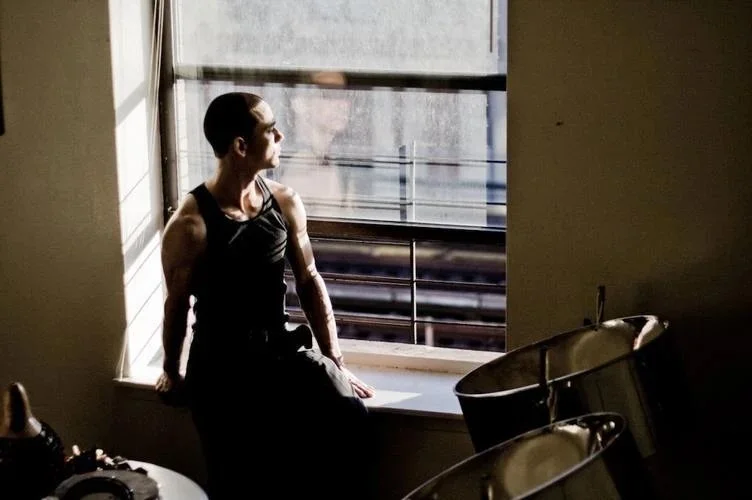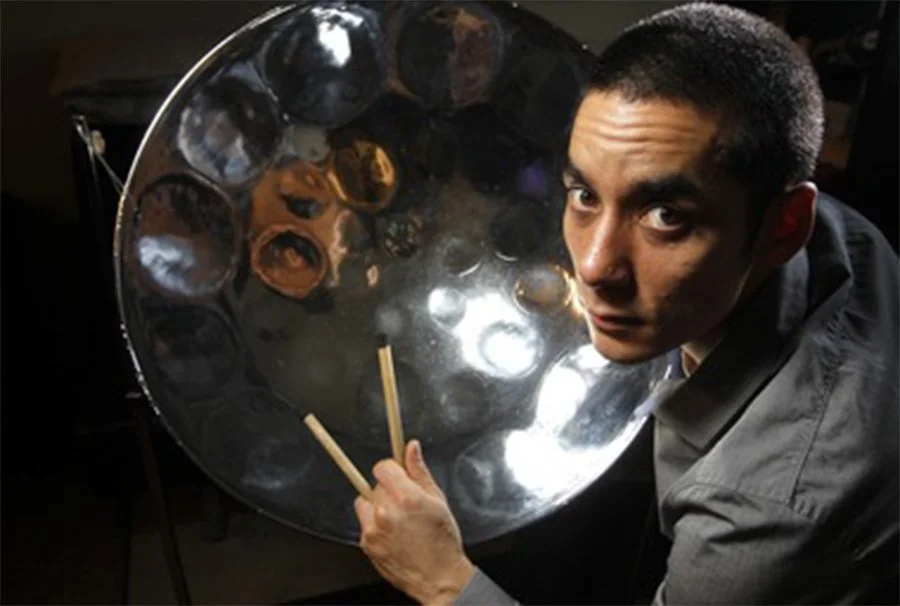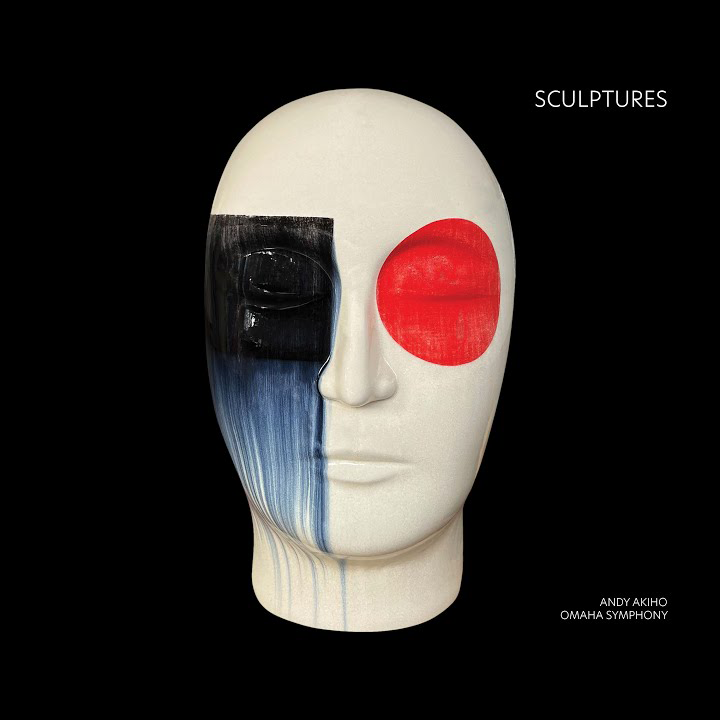Composers You Should Know: Andy Akiho
Andy Akiho, AMERICAN COMPOSER
BORN: February 7, 1979RAISED: COLUMBIA, South Carolina, USAAndy Akiho (b. February 7, 1979, South Carolina) is an American composer and percussionist known for his innovative use of sound and adventurous musical experimentation. His primary instrument is the steel pan, which he has championed beyond its Caribbean roots through genre-defying compositions and collaborations. Akiho has enjoyed a distinguished career, earning seven Grammy nominations and being named a finalist for the 2022 Pulitzer Prize in Music. He currently serves as the Oregon Symphony’s composer-in-residence for the 2024–25 season. Akiho’s work continues to elevate percussion in the classical music world and challenge traditional boundaries of genre and instrumentation.
Early Life & Education
Born in Columbia, South Carolina, Andy Akiho began playing drums at the age of nine, eventually expanding his focus to include a wide range of percussion instruments. His interest in the steel pan developed later, during his undergraduate studies. Akiho earned a Bachelor’s degree in Percussion Performance from the University of South Carolina, followed by a Master’s degree in Contemporary Music Performance from the Manhattan School of Music.
Between these two degrees, he undertook a formative period of study in Trinidad, where his deep engagement with the steel pan began. This experience profoundly shaped his artistic direction, inspiring him to explore the instrument’s expressive potential beyond its traditional Caribbean context. As a result, many of his early compositions reflect influences from Caribbean, folk, and jazz traditions.
Akiho later pursued a second Master’s degree in Composition at the Yale School of Music, and he is currently completing his PhD in Composition at Princeton University. Throughout his studies, he worked with influential composers such as Julia Wolfe, David Lang, Michael Gordon, Christopher Theofanidis, Ezra Laderman, and Martin Bresnick. A pivotal moment in his artistic development came during his time at Manhattan, when a performance of Jacob Druckman’s Come Round revealed the powerful potential of percussion as a leading voice in contemporary composition—an insight that continues to inform his work.
Scott Yoo and Andy Akiho / Great Performances
Musical Style & Innovation
One of Akiho’s most significant contributions is his elevation of the steel pan, showcasing its versatility both within its Caribbean roots and in broader musical contexts. His genre-crossing experimentation is evident in his innovative integration of the steel pan into new compositional settings alongside traditional Western instruments. For example, his piece
the rAy's end—written for steel pan, violin, and trumpet—demonstrates the instrument’s expressive potential in a chamber music setting. Akiho also pushes rhythmic boundaries through his use of complex polyrhythms, as heard in works like to wALk Or ruN in wEst harlem, which create dense, textured soundscapes. As a percussionist-composer, he often experiments with unconventional sound sources; in his Percussion Concerto, one solo passage is performed entirely on rice bowls.
Zou Shuang, artistic director of Beijing Music Festival, and composer Andy Akiho (right).
Andy Akiho plays a sculpture by Jun Kaneko -- Photo by Casey Wood
Major Works
Seven Pillars
Seven Pillars is among Akiho’s most acclaimed compositions, earning him a finalist position for the 2022 Pulitzer Prize in Music and Grammy nominations for Best Chamber Music/Small Ensemble Performance (Sandbox Percussion) and Best Contemporary Classical Composition. Written for Sandbox Percussion, the work consists of seven ensemble movements (“pillars”) interspersed with four solos. The piece highlights the vast range and expressive potential of percussion instruments, both as individual voices and as part of a cohesive ensemble.
Sculptures
Composed in 2023, Sculptures is a large-scale orchestral work featuring a soloist who performs on ceramic sculptures created by Japanese-American artist Jun Kaneko. Scored for full orchestra and a dedicated percussionist, the piece blurs the boundaries between visual art and music. Across its nine movements—Translucent, Bronze I, Petroglyph, Cylinders, Kintsugi, Ma, Density, Bronze II, and In That Space, At That Time—Akiho explores the sonic possibilities of nontraditional instruments, reaffirming his commitment to pushing the creative limits of percussion.
Influence, Legacy, and Cultural Impact
Andy Akiho has had a profound impact on the world of contemporary percussion, championing instruments like the steel pan and expanding their role within classical music. His work challenges traditional hierarchies in ensemble settings, positioning percussion not just as accompaniment, but as a primary voice. By integrating Caribbean musical traditions into Western classical forms, Akiho broadens the genre’s cultural scope and demonstrates the expressive range of instruments often overlooked in the concert hall. His music encourages a spirit of experimentation, inviting both performers and listeners to rethink the boundaries of sound, instrumentation, and musical identity.
Conclusion
Andy Akiho’s work represents a bold and original voice in contemporary music, redefining what is possible within classical and percussive traditions. His compositions continue to challenge conventions, inspiring audiences and fellow composers to explore new sonic territories. With a growing body of innovative work and a spirit of fearless experimentation, Akiho is shaping the future of 21st-century music.
Programs Featuring Andy Akiho’s Compositions:













